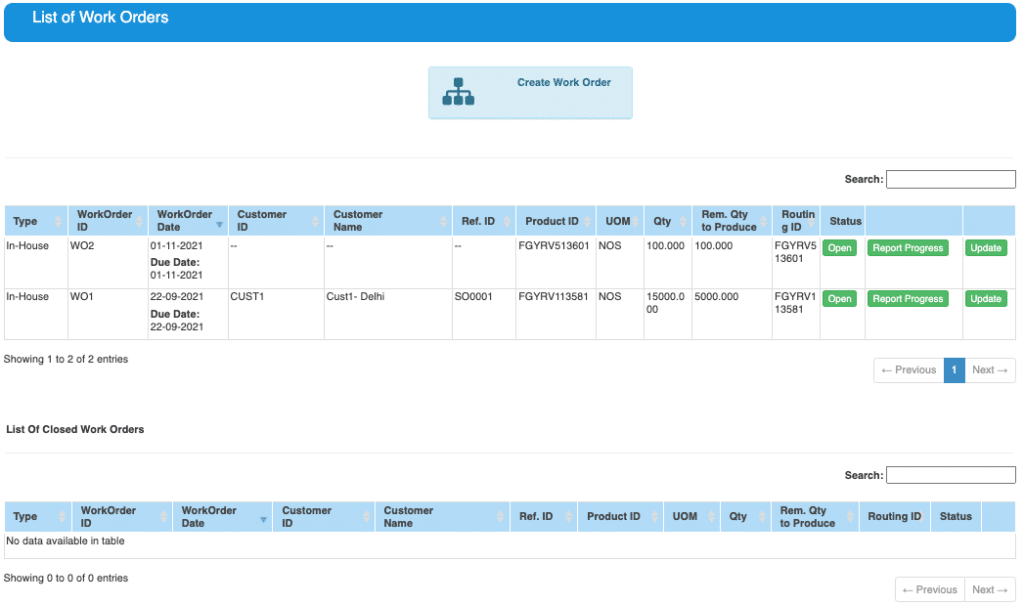We are trying to address many questions and related to Work Order Process and its advantages and disadvantages etc.
Finished Goods Reporting is a process to receive the Finished Goods into ERP and at the same time consume Raw Materials. Based on the Business needs customer will follow different process.
- Directly do a FGR and receive the Finished Goods – Firms who have less items and are controlled by close monitoring can follow this model.
- Manually do the Materials Request Form (MRF) and based on the receipt of materials to the destination locations, production reporting is done.
- Work Order Process – If you want to manage the internal process, it has complex multi process etc, please follow this. Advantages of this is
- Helps to define a set of operations / steps to complete to arrive at the Finished Goods (Routing process)
- Define the Work centres, where the real work happens as the Stores Person can transfer the RM to the location.
- Pre-Define the Process, where the Subcontracting Operation happens. This avoids the last minute confusions.
In this module, we try to address the following.
- What is Work Order process?
- How to setup a process?
- What are the steps to follow and master data needed?
- Advantages of setting up of a Work Order Process?
Work Order Dashboard with Open and Closed Work Orders.

Master Data needed to manage an efficient Work Order Process
- Product Master
- SO and its settings, incase, you convert a Sales Order to a Work Order.
- Manufacturing settings
- Bill of Materials
- Operations.
- Tools, if any
- Work centre
- Routings.
- Customer / Supplier Master for subcontracting.
- Batch Numbers, if any.